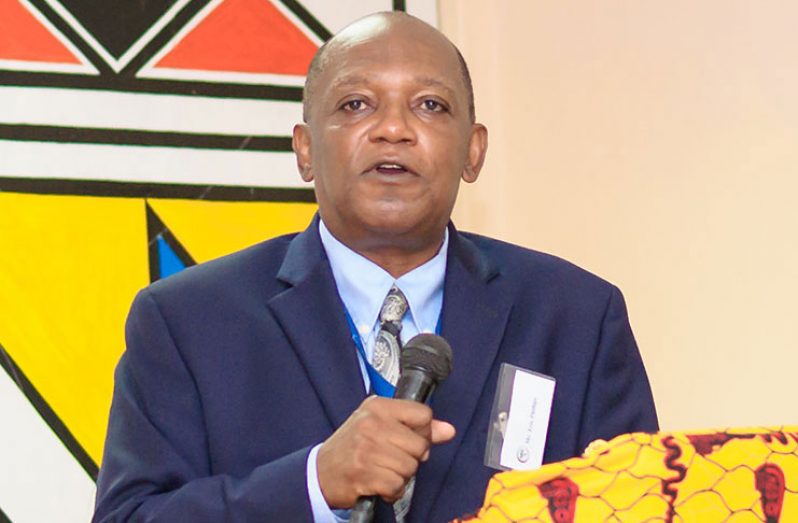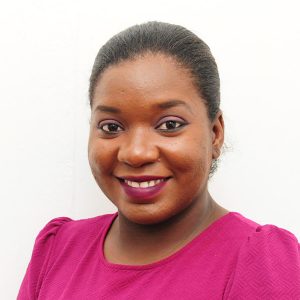WITH oil production on the horizon, African Cultural and Development Association (ACDA) Executive, Eric Phillips, said the time is ripe for African Guyanese to reclaim their entrepreneurial DNA, as he reflected on the advances made by freed Africans in the development before and after Emancipation.
For Africans, he said, entrepreneurship is natural and innate. “Africa is and was the cradle of civilisation. This fact is undeniable. Africans were the first entrepreneurs in the world. Entrepreneurial feats such as the pyramid still leave the world in awe. Africans were the first businessmen and women, first doctors, teachers, agriculturalists, traders and creators,” Phillips said in a statement on Thursday as Guyana celebrated its 181st Emancipation Anniversary.
Here in Guyana, he said captured Africans lent their immense skills and labour to the clearing and commercial development of 15,000 square miles of British Guiana (Guyana) under conditions now deemed to be “the greatest crime on Earth”. After Emancipation, Phillips noted that the natural entrepreneurial flair and skills of freed Africans resulted in the purchase of plantations which they converted into Villages.
“On 7 November 1839, 78 freed men and five freed women, from five plantations – Ann’s Grove, Dochfour, Enmore, Hope and Paradise – on the East Coast of Demerara, British Guiana, walked 29 kilometers to Georgetown with a wheel barrow of coins worth 10,000 guilders which they had saved and had buried in the ground. Within 15 days, they paid and additional 20,000 guilders , based on a promissory note they had signed, to purchase plantation Northbrook, a former cotton plantation of 500 acres for 30,000 guilders, which they renamed Victoria,” Phillips said as he flipped back the pages of history.
He said the purchase of Northbrook was the birth of the Village Movement in Guyana and remains the greatest entrepreneurial activity in any post-slavery society after Emancipation.
“Nowhere, nowhere else in the world, except Guyana was such a village movement ever successfully implemented on such a very large-scale,” he said.
Quoting Rawle Farley, Phillips said the village movement was “the most spectacular and aggressive land settlement movement in the history of the people of the British Caribbean and a movement which seemed to one planter in British Guiana to be certainly without parallel in the history of the world!”
Subsequent to the purchase of Northbrook, the 42,000 freed Africans invested US$2.5M, over a 12-year period. They owned their own homes, grew their own food, created and implemented their own governance systems and worked together to create a village economy.
REMARKABLE ACHIEVEMENT
“This US$2.5 million investment, equivalent to almost US$2 billion dollars today was a remarkable achievement for a people whom had been enslaved for over 200 years and who became free only 12 years prior,” Phillips noted.
He was keen on pointing out that the village movement was an entrepreneurial venture with several facets. “It wasn’t just about buying land. It was far more and consisted of 10 separate but integrated goals: (1) real estate development; (2) agricultural crop production; (3) self-governance; (4) community development; (5) a sustainable life in a now new Guyanese environment; (6) the creation of a new identity after enslavement; (7) freedom and economic independence; (8) schools and churches of their own; (9) food security; and (10) gold production and other economic activities,” he explained.
The ACDA executive said the movement involved a combination of social and commercial entrepreneurship.
“A village meant freedom. Living off the plantation was a qualitative aspect of freedom. Not only were they out of the plantation but in the villages they also began to exercise what was totally impossible before: some political power.
“The villages were self-governing units. The villages were collectives, communal arrangements that had a total aspect to them. They were not merely units of production. In fact, their function was only marginally to produce. Primarily, their function was to guarantee that life could be reproduced within the physical space called a village, and that the Africans themselves had the power to decide how that space was to be policed, and how the rates and taxes that were produced were going to be spent to maintain sanitation and so on within the village,” Walter Rodney wrote in his book “From Niggeryard to Village.”
Emphasising that entrepreneurship is in the genes of Afro Guyanese, Phillips said it is time that they reclaim their legacy and create generational wealth but they must know their history. “A people without the knowledge of their past history, origin and culture is like a tree without roots,” he said while quoting Marcus Garvey.
Guyana was developed by two incredible events that involved people of African descent. The first event was the physical creation of Guyana during 200 years of brutal enslavement in a system now defined by the United Nations as “the greatest crime against humanity”.
It was noted that before Emancipation (1621-1838), Africans played a critical role in the development of Guyana. Africans, he recalled, “had driven back the sea and had cleared, drained and reclaimed 15,000 square miles of forest and swamps,” noting that all the plantations now turned villages and cities were built by unpaid African labour.


.jpg)











